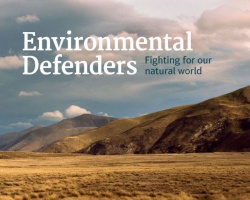National Climate Summary – September 2000
VERY WET IN CANTERBURY AND OTAGO
VERY
DRY IN NORTHLAND
NEAR AVERAGE TEMPERATURES IN
MANY REGIONS
SUNNY IN SOUTHLAND AND MANY WESTERN
REGIONS
September was again a month featuring a large rainfall variation between Canterbury/Otago, and the remainder of the country. Parts these two South Island regions received at least double the normal average rainfall for the month; mostly occurring during the first two weeks. It was also wet in Taranaki, Wanganui, and Fiordland.
In contrast, rainfall was less than 50 percent (half) of average in Northland, with extremely low September rainfall recorded in Whangarei. It was also drier than average in Auckland, western Bay of Plenty, Gisborne, Wairarapa, and Buller. In Gisborne and Hawke’s Bay the storm near the end of the month replenished low soil moisture levels from the dry winter.
September was warmer than average in Gisborne, Hawke’s Bay, Bay of Plenty, Buller, Canterbury and Southland. Cooler than normal conditions prevailed in parts of the Waikato, Taranaki, Central Otago and the MacKenzie Basin. The national average temperature was 10.6°C, +0.2°C above the 1961-1990 normal. Above average sunshine totals occurred in Southland and many western regions.
High winds battered the North Island on the 25th and 26th with significant damage occurring in Taranaki, Gisborne and Hawke’s Bay. The Desert Road, and Taupo-Napier highway were closed by snow and ice, and a number of trampers and travelers were isolated by the conditions.
September’s climate patterns were due to more frequent than usual depressions (“lows”) often centred over southern New Zealand to the Chatham Islands. Stronger westerlies than normal occurred over the North Island and north of the South Island. The seas around the country continued to be warmer than normal.
VERY WET IN CANTERBURY AND
OTAGO
Rainfall was well above average in Canterbury and most of Otago, with totals at least 200 percent (double) normal in some areas. It was also wetter than normal in Taranaki, Wanganui, other parts of Otago, and Fiordland, where rainfall was at least 150 percent of normal.
VERY DRY IN NORTHLAND
Rainfall was less than 50 percent (half) of average in Northland. It was also drier than average in Auckland, western Bay of Plenty, Gisborne, Wairarapa, and Buller, where totals were less than 75 percent of normal. Extremely low September rainfall was recorded at:
Location September
rainfall
(mm) Percentage
of normal Year
records
began Comments
Whangarei Airport 37 30 1937 2nd
lowest
/1 of 2 pages
NEAR
AVERAGE TEMPERATURES IN MANY REGIONS
September was warmer
than average in Gisborne, Hawke’s Bay, Bay of Plenty,
Buller, Canterbury and Southland, with mean temperatures
about 0.5°C above normal. Cooler conditions prevailed in
Waikato, Taranaki, Central Otago and the MacKenzie Basin,
with mean temperatures about 0.5°C below normal.
Temperatures were near average in other
regions.
SUNNY IN SOUTHLAND AND MANY WESTERN REGIONS
Sunshine and solar radiation totals were more than 130 percent of normal in Southland, and above 110 of normal in Waikato, King Country, Taranaki, and the South Island West Coast. Below average sunshine was recorded on the Kapiti coast. Other regions experienced near average sunshine.
Extremely high September sunshine was recorded at:
Location September
sunshine
(hours) Percentage
of normal Year
records
began Comments
Invercargill Airport 191 148 1932 2nd
highest
HIGHLIGHTS
Extreme temperatures
The lowest air temperature for the month was
-6.0oC, recorded at Lake Rotoiti on the 27th. The lowest
September air temperature on record at Lake Rotoiti is –7.7
oC.
The highest air temperature for the month was 26.0 oC, recorded at Ashburton on the 29th. The highest September air temperature on record at this site is 28.82°C.
Storm: 25-26 September
High winds
from the south and southeast affected the North Island and
snow occurred on higher ground in Hawke’s Bay over the 25th
and 26th of September, as a developing depression tracked
across the North Island, from the Tasman Sea. The highest
gust was 155 km/hr at Castlepoint, and 135 km/hr at Mahia
Peninsula. In New Plymouth windows were smashed, while
southerly gales buffeted Wellington where a yacht broke its
mooring. The Desert Road, and Taupo-Napier highway were
closed by 20cm of snow and ice, and a number of trampers and
travelers where isolated by the weather. 15 cm of snow
occurred in the Hawke’s Bay higher country with 40 cm in the
Wairoa District. High winds also affected Gisborne and
Hawke’s Bay, where power lines were down, and a few houses
lost their roofs, and fences were damaged. Many rural
Wairoa residents were without power for three days. Losses
in the Wairoa region were in millions of dollars, in terms
of lost livestock and uprooting or damaging thousands of
trees. In Hawke’s Bay, the storm also produced high
rainfall (50 to 65 mm) on the 25th. A boat, 30 km northeast
of Great Barrier Island, was caught in high seas (7 m
waves), on the 26th; with three people rescued.
For
further information, please contact:
Dr Jim Salinger,
NIWA - Auckland,
Tel (09) 375 2053 (Business) or (09)
527 3939 (after hours)
or Stuart Burgess, NIWA -
Wellington, Tel (04) 386 0569
© Copyright NIWA 2000.
All rights reserved.
Acknowledgement of NIWA as the
source is
required.


 Environmental Defence Society: Groundhog Day, New Book Shows History Is Repeating Itself
Environmental Defence Society: Groundhog Day, New Book Shows History Is Repeating Itself NZEI Te Riu Roa: Mandated Single Approach To Reading Will Not Work
NZEI Te Riu Roa: Mandated Single Approach To Reading Will Not Work The Conversation: Could The School Phone Ban Work?
The Conversation: Could The School Phone Ban Work? Public Health Communication Centre: To Avoid A Measles Epidemic, Aotearoa Must Close The ‘Immunity Gap’
Public Health Communication Centre: To Avoid A Measles Epidemic, Aotearoa Must Close The ‘Immunity Gap’ Heritage New Zealand: Kid-friendly Archaeology Resource Kit Launched As Part Of Archaeology Week
Heritage New Zealand: Kid-friendly Archaeology Resource Kit Launched As Part Of Archaeology Week Tatai Aho Rau Core Education: Cyber Skills Programme For Tamariki Recognised At Māori Language Awards
Tatai Aho Rau Core Education: Cyber Skills Programme For Tamariki Recognised At Māori Language Awards